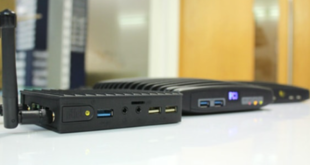Network Access Control authenticates, authorizes and profiles users and their devices before they connect to a network. It also acts as a perpetual inventory of user and device information. With employees bringing personal devices to work and BYOD policies, organizations must protect their infrastructure against shadow devices that may plug into empty wired ports. NAC is an important tool for preventing this kind of threat.
What is NAC?
Network Access Control (NAC) is a security system that monitors and verifies user identities, network devices, and servers. It prevents malicious actors from gaining unauthorized access to critical infrastructure. It also prevents them from moving laterally around the network, thus limiting their exposure to other potential threats. With employees working remotely and on multiple devices, many companies use NAC to maintain the visibility of their entire environment. It is crucial because it enables them to minimize security risks while providing users with the required flexibility.
Traditional NAC solutions use pre-admission authentication to verify and authorize users. They then deploy internal firewalls to segregate different network resources and ensure that endpoints only access data corresponding to their privileges. If they breach these privileges, network access control tools will shut down the offending device and require re-authentication to allow it back into the network. To increase the efficiency of their NAC systems, modern vendors like Fortinet offer a range of integrations and built-in artificial intelligence capabilities that spot anomalous behavior faster than human security analysts. These technologies, along with other features such as multi-factor authentication and a wide variety of biometric security options, enable today’s leading NAC solutions to be more secure. They also help organizations maintain compliance with industry-specific regulations such as HIPPA, PCI-DSS, SOX and GLBA.
What is NAC’s Role in Security?
By enforcing security policies, NAC ensures unauthorized users can’t connect to corporate networks. The NAC system, for instance, will prevent access if a worker brings in a USB stick that contains malware unless the item conforms with all security guidelines. It also ensures that devices and users are authenticated before entering a network by checking that they have the right passphrase for a wireless connection. NAC solutions are especially critical for companies with remote employees or a BYOD policy. By constantly mapping devices and users, enforcing security policies, and monitoring for threats, NAC prevents malicious actors from exploiting corporate resources. It helps companies avoid data breaches that would expose sensitive information and cause customer trust issues while keeping them in compliance with government regulations.
In addition, NAC solutions monitor and update as a network grows and new devices and users join. It helps ensure that all devices on a network are secure and that the NAC system can quickly and reliably identify vulnerabilities. NAC solutions also vary in how they authorize endpoint access, with some applying security policies before granting a device network access (known as pre-admission control). In contrast, others apply the same policy after a device is connected to a network (known as post-admission control). It makes NAC more scalable and allows it to handle large enterprise networks with diverse types of devices.
What is NAC’s Purpose?
Organizations use NAC to ensure that devices and users connected to their network are authenticated and comply with security policies. It helps to meet stringent government norms and protects sensitive information from advanced persistent threats (APT). NAC allows organizations to monitor network access for devices, users and applications. It also will enable CISOs to set permission policies based on users’ job roles. It helps ensure users’ access to network storage aligns with what they need to do their jobs and reduces the risk of data breaches.
A good NAC solution will also help to prevent unauthorized devices from connecting to an organization’s network in the first place. It will also identify and track unauthorized or compromised devices that have joined the network so that they can be taken offline and the threat mitigated. Different NAC solutions are available on the market, including out-of-band and in-line. Out-of-band solutions allow the policy to be managed on a separate server, not part of the normal network traffic flow. At the same time, in-line NAC works with switches, routers and wireless access points to enforce network access rules. In light of work-from-home policies and Bring Your Device (BYOD) initiatives, many businesses are searching for a better solution to handle network access control.
What is NAC’s Disadvantage?
Many NAC solutions offer features to help ensure that users and devices are vetted on a granular basis, not just as whole groups. It aids in reducing the quantity of erroneous positive and negative results that may otherwise result from a policy. It also provides flexibility to allow access on an individual or per-device basis. It will enable companies to grant guests or contractors a different level of access than full-time employees, for example. Devices can also be quarantined, allowing them to receive updates or work without touching the rest of the network.
Tracking users and their endpoints on a granular basis can also save IT teams time. It reduces the human effort required to authenticate and verify a user’s device while blocking access to suspicious activity and helping to prevent malware threats and cyberattacks at scale. NAC can also be a valuable tool for monitoring compliance with industry-specific regulations related to consumer data protections such as HIPPA, PCI, GLBA, SOX, CCPA and GDPR. By following gold-standard security practices across all networks and ensuring they have the appropriate controls, businesses can earn trust dividends from their customers and mitigate the risk of costly fines or other penalties. NAC is a solution that, once in place, should be monitored regularly to ensure it continues to be effective.
 Time News Global Business, Technology, Entrepreneurship News
Time News Global Business, Technology, Entrepreneurship News




